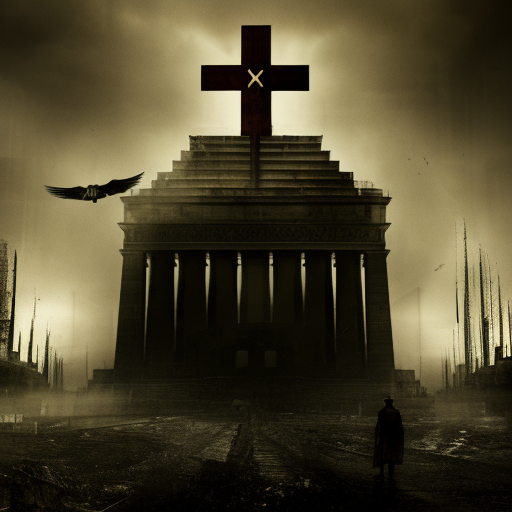The Rise and Fall of the Third Reich: A History of Nazi Germany
One-line summary: The Rise and Fall of the Third Reich is a comprehensive account of Nazi Germany, chronicling its rise to power, its brutal reign, and its ultimate downfall.
In “The Rise and Fall of the Third Reich: A History of Nazi Germany,” author William L. Shirer provides a detailed and gripping account of one of the darkest periods in human history. Spanning from Adolf Hitler’s rise to power in 1933 to the collapse of the Nazi regime in 1945, Shirer delves into the political, social, and military aspects of Nazi Germany. Through meticulous research and personal experiences as a journalist stationed in Berlin during the early years of Hitler’s rule, Shirer paints a vivid picture of the rise and fall of the Third Reich.
The Rise of Nazi Germany
Shirer begins by examining the conditions that allowed Hitler and the Nazi Party to gain power. He explores the aftermath of World War I, the economic turmoil of the Weimar Republic, and the political instability that plagued Germany during the 1920s. Hitler’s charismatic leadership, propaganda machine, and ability to exploit the fears and frustrations of the German people are highlighted as key factors in his rise to power.
The author also delves into the Nazi Party’s consolidation of power, including the Enabling Act of 1933, which effectively granted Hitler dictatorial powers. Shirer explores the systematic dismantling of democratic institutions, the persecution of political opponents, and the establishment of the Gestapo, the SS, and other instruments of state control. The book provides a chilling account of Hitler’s manipulation of the German people and his relentless pursuit of racial purity and expansionist policies.
The Brutal Reign of the Third Reich
Shirer’s narrative takes readers through the horrors of Nazi Germany’s reign. He describes the persecution and marginalization of Jews, the implementation of the Nuremberg Laws, and the establishment of concentration camps. The book also delves into the aggressive foreign policy pursued by Hitler, including the annexation of Austria and Czechoslovakia, the invasion of Poland, and the subsequent outbreak of World War II.
The author provides a detailed account of the war, from the lightning-fast victories in France to the grueling battles on the Eastern Front. He highlights the atrocities committed by the SS and Einsatzgruppen, the resistance movements that emerged in occupied territories, and the role of key figures such as Heinrich Himmler and Joseph Goebbels. Shirer’s narrative is both informative and harrowing, shedding light on the immense suffering inflicted by the Nazi regime.
The Downfall of the Third Reich
In the final chapters of the book, Shirer chronicles the decline and ultimate collapse of the Third Reich. He explores the turning points of the war, such as the Battle of Stalingrad and the D-Day invasion, which marked the beginning of the end for Hitler’s regime. The author also delves into the internal power struggles within the Nazi Party, including the failed assassination attempt on Hitler and the subsequent purges.
Shirer concludes with the fall of Berlin, Hitler’s suicide, and the subsequent surrender of Germany. He reflects on the immense human cost of the war and the lasting impact of the Holocaust. The book serves as a stark reminder of the dangers of totalitarianism, the consequences of unchecked hatred, and the importance of vigilance in safeguarding democracy.
Key takeaways:
- The Rise and Fall of the Third Reich provides a comprehensive account of Nazi Germany, chronicling its rise to power, its brutal reign, and its ultimate downfall.
- The book highlights the conditions that allowed Hitler and the Nazi Party to gain power, including economic turmoil, political instability, and Hitler’s ability to exploit the fears and frustrations of the German people.
- Shirer’s narrative sheds light on the horrors of Nazi Germany’s reign, including the persecution of Jews, the establishment of concentration camps, and the aggressive foreign policy pursued by Hitler.
- The book also explores the turning points of the war and the internal power struggles within the Nazi Party, ultimately leading to the collapse of the Third Reich.
Memorable quote from the book:
“The Nazis were not just another political party, and Hitler was not just another politician. He was the incarnation of evil.”












